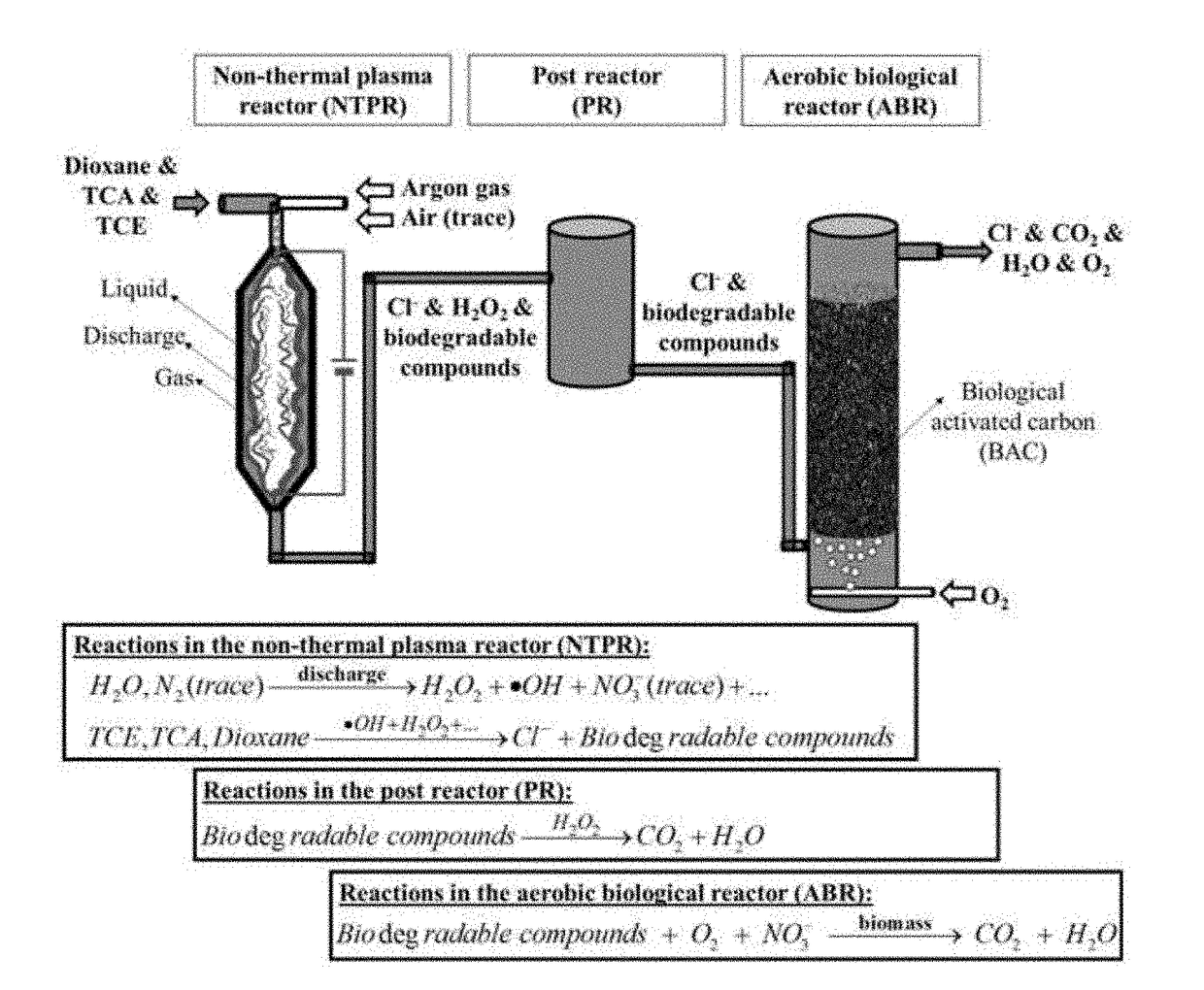Gas-liquid plasma and bioreactor system and method for remediation of liquids and gases
a bioreactor and gas-liquid technology, applied in the field of organic contaminants treatment, can solve the problems of reducing the ability to manage infectious diseases, affecting the health of people, and affecting the quality of life of people, and achieve the effect of reducing hydrogen peroxid
- Summary
- Abstract
- Description
- Claims
- Application Information
AI Technical Summary
Benefits of technology
Problems solved by technology
Method used
Image
Examples
example
[0095]This invention involves the utilization of a gas-liquid plasma reactor to partially degrade organic compounds from gases and liquids and a following bioreactor to completely degrade the organic compounds into mineralized products. The plasma reactor converts the organic compounds into biodegradable components by the plasma induced chemical reactions with hydroxyl radicals and other species, followed by the bioreactor to degrade these products into mineralized compounds. The plasma energy costs may be too high for complete mineralization and some compounds formed are not readily degraded by the plasma. The bioreactor may not often be efficient in degrading toxic organic compounds and in the example used here, 1,4-dioxane cannot be readily degraded by the bioreactor. The plasma reactor was shown to be able to degrade 1,4-dioxane, but based upon total organic carbon analysis a range of intermediate products were formed that could not be further removed by the plasma. However, the...
PUM
| Property | Measurement | Unit |
|---|---|---|
| frequency | aaaaa | aaaaa |
| energy | aaaaa | aaaaa |
| energy | aaaaa | aaaaa |
Abstract
Description
Claims
Application Information
 Login to View More
Login to View More - R&D
- Intellectual Property
- Life Sciences
- Materials
- Tech Scout
- Unparalleled Data Quality
- Higher Quality Content
- 60% Fewer Hallucinations
Browse by: Latest US Patents, China's latest patents, Technical Efficacy Thesaurus, Application Domain, Technology Topic, Popular Technical Reports.
© 2025 PatSnap. All rights reserved.Legal|Privacy policy|Modern Slavery Act Transparency Statement|Sitemap|About US| Contact US: help@patsnap.com



